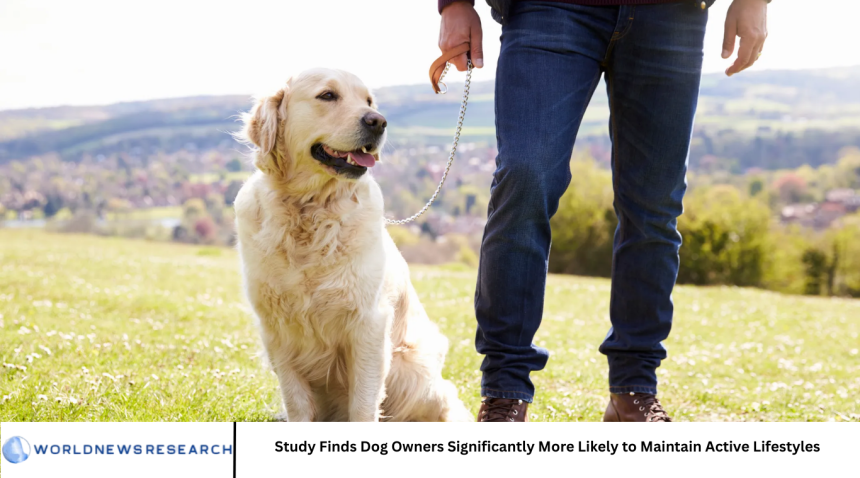If you’ve ever noticed how dog owners stride down the sidewalk, leashes in hand, you’re not imagining things—there may be a reason for that lively paceset! Recent research indicates that dog owners are significantly more likely to lead active lifestyles than non‑owners. Some studies suggest they are up to four times more likely to meet daily physical activity goals.
This article explores the findings, examines the science behind dog-induced activity boosts, delves into the broader health implications, and offers practical advice for both dog owners and those considering pet adoption. We’ll wrap up with seven insightful FAQs to address lingering questions.
Study Summary: What the Research Says
A recent cross-sectional study tracked adults over several months, comparing physical activity metrics (like daily steps and moderate-to-vigorous physical activity minutes) among dog owners and non-owners. The results were striking:
- Dog owners were up to four times more likely to reach recommended daily physical activity thresholds.
- On average, dog owners walked 30 to 60 minutes more per day, largely thanks to regular dog-walking habits.
- These patterns held even when adjusting for age, gender, socioeconomic status, and baseline fitness levels.
The studies didn’t just measure steps—they often included wearable tracker data and self-reported lifestyle questionnaires, reinforcing the link between dog ownership and consistent activity.
Mechanisms: Why Dogs Boost Activity
Routine and Responsibility
Owning a dog creates a built-in activity schedule. Dogs need multiple daily walks, rain or shine. This external accountability is a powerful motivator that anchors humans to consistent movement.
Social Motivation
Pet owners are frequently motivated by their companion’s enjoyment. The simple joy and energy of a dog pulling toward the door can turn a two-minute errand into a full neighborhood walk.
Environmental Variation
Dogs compel owners to explore local routes, parks, and neighborhoods they might otherwise ignore—adding variety to routines and increasing exploration-based movement.
Mental Reward
Exercise isn’t just physical; it’s emotional. Dog walks offer stress relief, mood lifts (thanks to oxytocin release), and incidental mindfulness—which reinforces the behavior.
Health and Wellness Benefits
Physical Health
- Cardiovascular Improvements: Regular walking supports heart health by helping manage blood pressure and cholesterol.
- Weight Management: Extra activity makes maintaining or losing weight more feasible.
- Muscle & Joint Health: Regular walking strengthens lower-body muscles and supports joint mobility, especially for older adults.
Mental Health
- Reduced Anxiety & Depression: Walking with a pet is linked to improved mood and lower stress levels.
- Improved Sleep & General Wellbeing: Active routines correlate strongly with better sleep patterns and overall life satisfaction.
Social Health
Dog walking can foster community engagement. Encounters with neighbors or fellow pet walkers provide social connections, reducing feelings of isolation.
Dog Ownership Considerations
Owning a dog isn’t for everyone, and it’s essential to weigh responsibilities:
Time Commitment
Daily walks, feeding, grooming, vet visits, training—it all adds up. Prospective owners should evaluate whether their lifestyle supports these ongoing needs.
Cost Factors
Beyond food and shelter, consider the financial outlay for veterinary care, licensing, grooming, accessories, and potentially pet insurance.
Suitable Lifestyle Match
Some breeds require more exercise or mental stimulation than others. Matching a dog’s energy level with your lifestyle (e.g., active vs. more relaxed) is crucial for long-term compatibility.
Alternative Options
For those unable to own a dog, volunteering at shelters, dog-sitting, fostering, or even “sharing” dog walking with friends or family can provide similar activity benefits.
Making the Most of Dog Walking
Here are practical tips to maximize the health benefits of walking with your pup:
- Set a Routine: Aim for 30–60 minutes twice daily, if feasible.
- Vary the Route: Changing routes provides mental engagement for bothdog and owner.
- Incorporate Other Exercise: Add hills, jogs, or playtime to elevate heart rate.
- Track Activity: Use fitness trackers to set and monitor walking goals.
- Mind the Basics: Use proper footwear, bring water, and check weather/ground conditions to protect both you and your dog.
- Include Social Opportunities: Bring a friend, join dog-walking groups, or visit local dog-friendly parks.
Broader Societal Impacts
Urban Design and Dog-Friendly Spaces
Cities with dog parks, accessible trails, and pet-friendly infrastructure encourage safe, frequent walks.
Healthcare Savings
Communities with higher physical activity rates see less chronic disease burden, potentially lowering healthcare costs. Dog ownership may play a small but measurable role.
Mental Health and Community Interaction
Pet-centered activity promotes not only healthier individuals but also stronger social fabric through casual interpersonal contact and shared pet interest.
Who Gains Most? Demographics and Equity
Studies often show dog-walking’s benefits are pronounced among:
- Older Adults: Support for mobility, routine, and social interaction.
- Suburban Dwellers: More space and safer neighborhoods amplify dog-walking frequency.
- Lower-Mobility Individuals: Dogs can be motivators to stay active (within physical limitations).
However, housing restrictions, income, and urban density can limit dog ownership. For those in apartments or low-income situations, shelters or subsidized programs may offer solutions.
Potential Downsides to Consider
While overall beneficial, dog ownership and walking do have challenges:
- Risk of Injury: Pets sometimes pull or lunge, increasing fall risk, especially for elderly owners.
- Weather Constraints: Extreme heat, cold, or storms can make walking difficult—or unsafe.
- Allergies & Hygiene: Pet dander, mud, or allergens can exacerbate conditions.
- Noise and Rights: Barking or trail etiquette requires mindfulness to maintain good neighbor relations.
- Overpopulation: Adopting from shelters helps, but future owners must commit to lifelong pet responsibility.
Frequently Asked Questions
How significant is the increase in physical activity among dog owners?
Studies show dog owners can be up to four times more likely to meet daily activity guidelines—often adding 30–60 extra minutes of walking each day compared to non-owners.
Why do dogs make people more active?
Dogs create routine, companionship, accountability, and environmental variety—all of which encourage consistent movement more effectively than self-motivation alone.
What should I consider before getting a dog for health reasons?
Evaluate your ability to invest time, energy, and money. Consider your living situation, activity preferences, and the temperament and needs of the breed you are choosing.
Can I get similar activity benefits without owning a dog?
Yes! You can volunteer at animal shelters, dog-sit for friends, or walk foster dogs. These activities can also motivate regular walking and social interaction.
What health benefits do regular dog walks provide?
Dog walking supports cardiovascular health, aids in weight management, boosts mood, eases stress, enhances social interaction, and improves overall daily activity levels.
Are there risks involved with dog walking?
Yes—risks include falls or injuries from pulling, weather-related hazards, allergies, and the responsibility of management. Injuries can be minimized with proper equipment and training.
How can cities support healthy living through dog ownership?
Creating dog-friendly infrastructure—safe walking paths, parks, pet stations, and inclusive housing policies—encourages responsible ownership and promotes public health through movement.
Conclusion
Dog ownership isn’t just good for the heart emotionally—it enhances physical health and activity levels substantially. Research finds dog owners are up to four times more likely to lead active lives, thanks to built-in motivation, obligation, and companionship that turn walkies into wellness.By understanding the benefits and responsibilities, and adopting smarter habits, both dog-owning and non-owning health-seekers can unlock movement routines—often inspired by our furry friends—that support long-term wellbeing.






